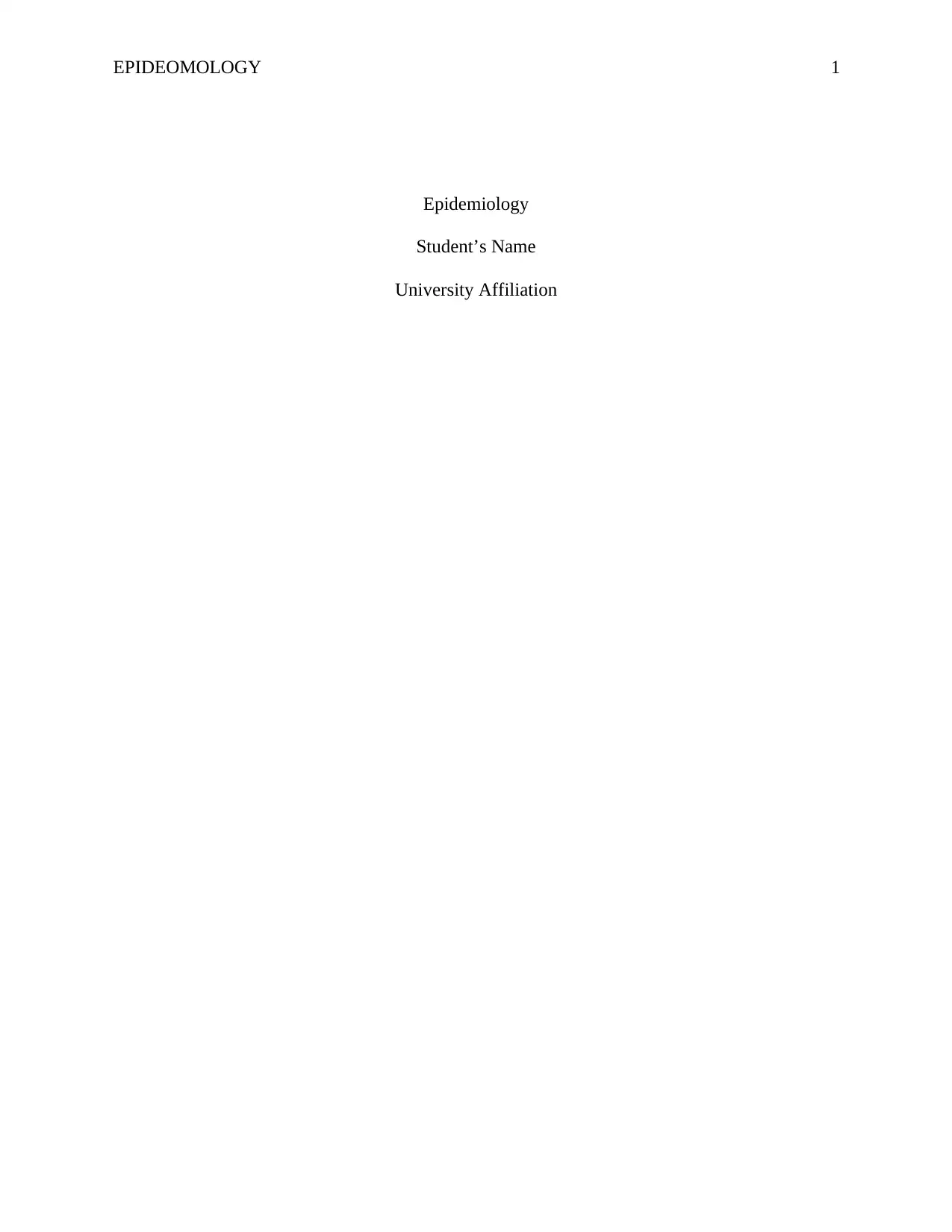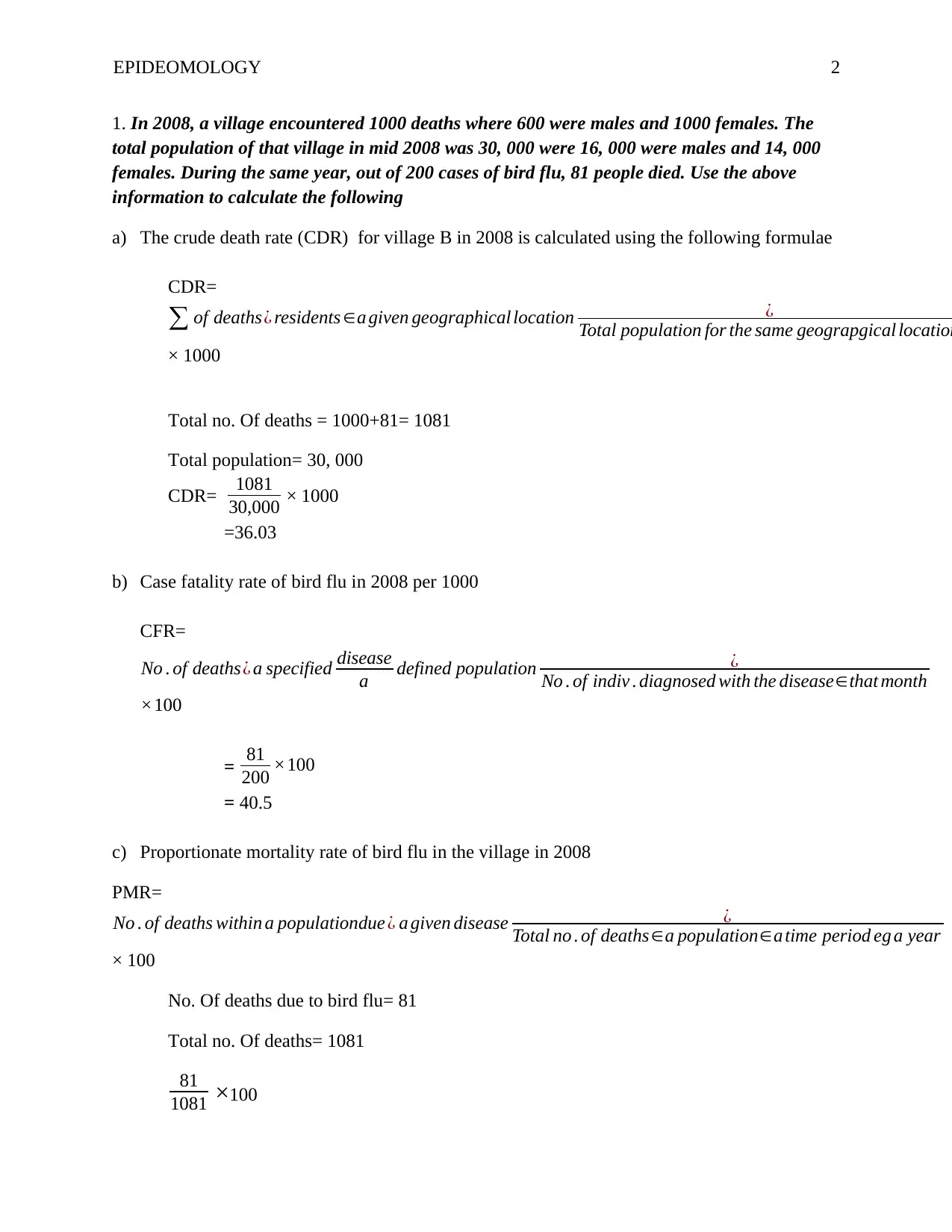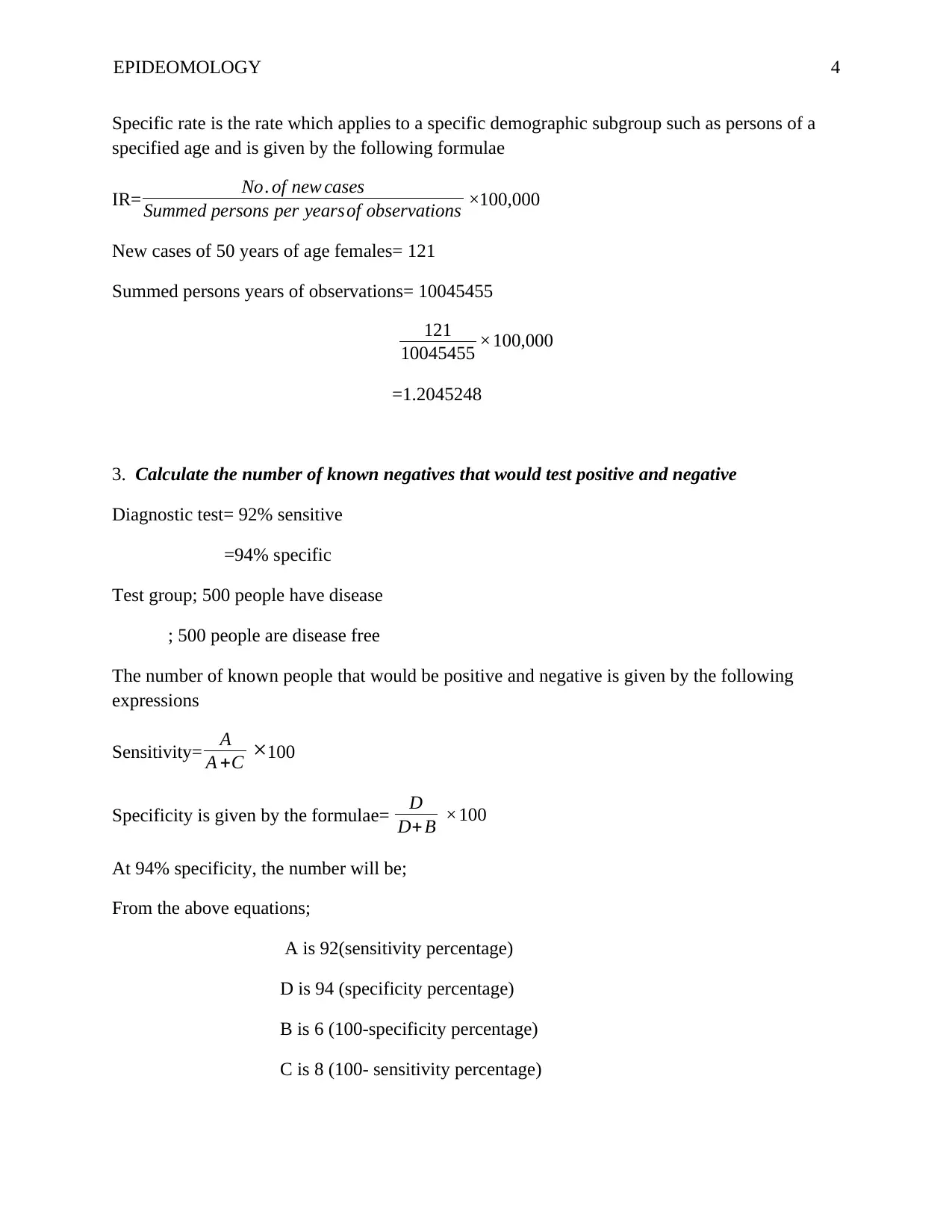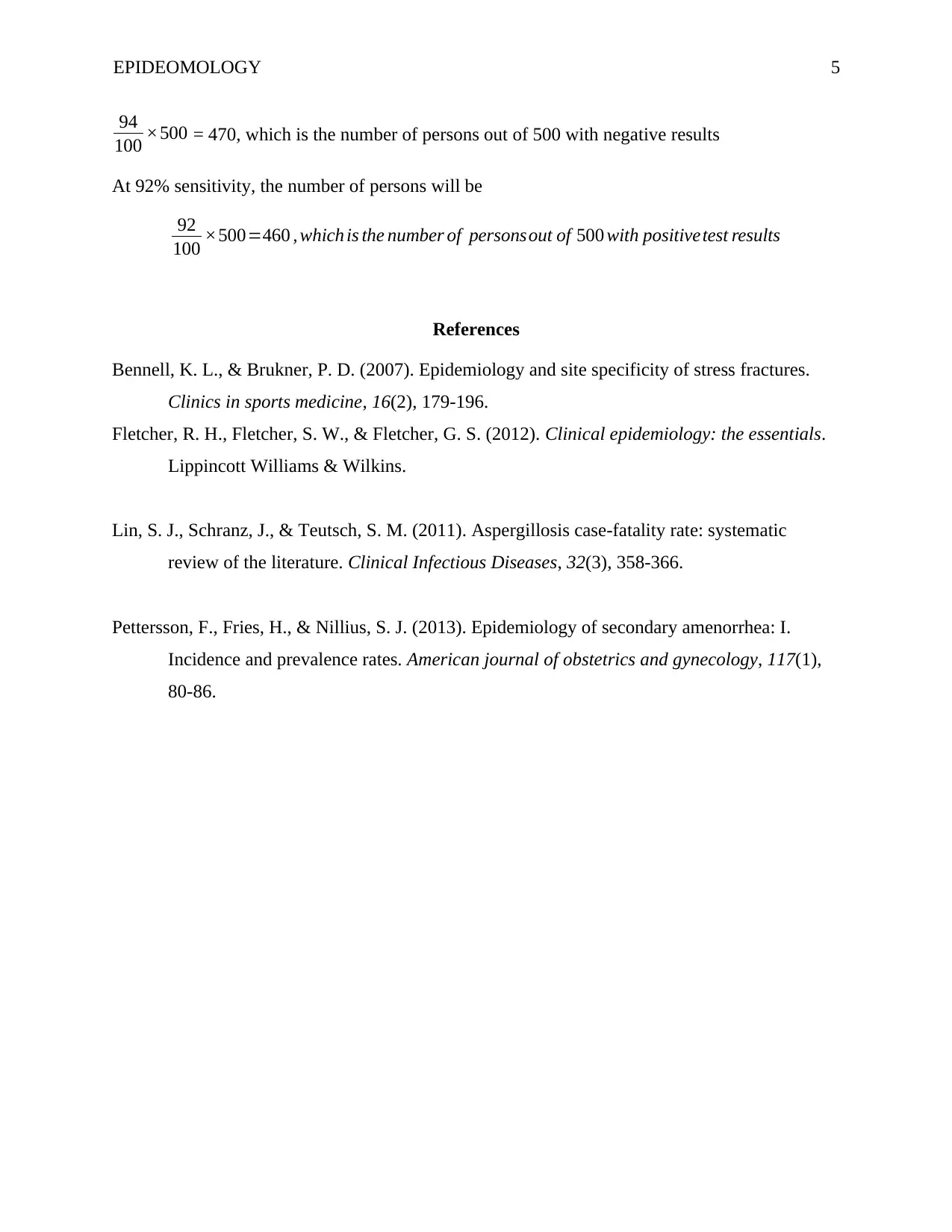Epidemiology Assignment: Calculations of Rates and Diagnostic Tests
VerifiedAdded on 2020/04/15
|5
|625
|35
Homework Assignment
AI Summary
This assignment presents a series of epidemiology calculations based on provided data. It begins with calculating the crude death rate (CDR), case fatality rate (CFR), and proportionate mortality rate (PMR) using data on village deaths and bird flu cases. The assignment then progresses to calculating incidence and prevalence rates, as well as age-specific incidence rates, using a table of data on disease X. Finally, the assignment addresses the analysis of diagnostic tests, calculating the number of true positives and true negatives based on given sensitivity and specificity percentages. The solution includes the formulas and step-by-step calculations for each epidemiological measure. References from academic journals are included to support the calculations.
1 out of 5






![[object Object]](/_next/static/media/star-bottom.7253800d.svg)